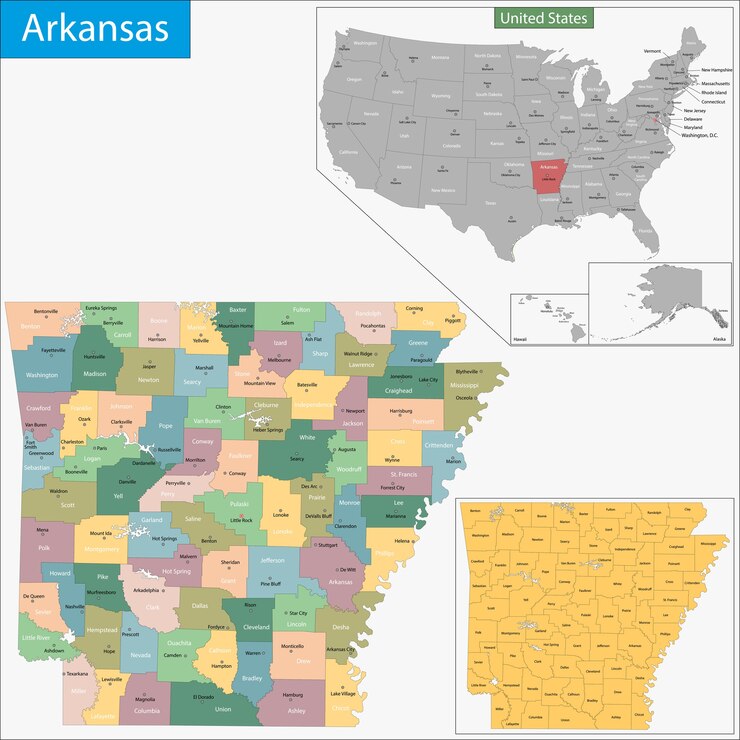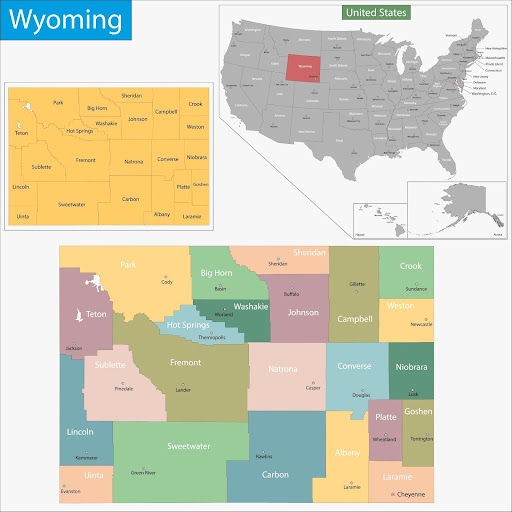Table of Contents
Arkansas may not dominate national wildfire headlines, but don’t let that fool you. From lightning-sparked ignitions in the Ozarks to escaped burns on the Delta, the state’s fire behavior is as complex as its topography.
Fire investigators working in Arkansas must navigate not only steep ridgelines and sandy pine flats but also a patchwork of local agencies, federal jurisdictions, and evolving weather patterns.
This guide breaks down Arkansas’s wildland fire infrastructure with a focus on operational relevance. Inside, you’ll find agency responsibilities, seasonal risk insights, training pathways, and critical contact information.
Live Incident Updates & Maps
Timely situational awareness is important when you're preparing for an interview or rechecking a burn perimeter. Use this live tool to track activity:
State Overview
Arkansas’s geography packs a punch. The Ozark and Ouachita Mountains dominate the north and west, layered with hardwoods and conifers that accumulate deep duff and ladder fuels. Central Arkansas features a mix of pine plantations and transitional terrain, while the southern region flattens into sandy soils and loblolly forests. These are ideal conditions for fast-moving surface fires.
Meanwhile, the Delta’s lowlands bring their own quirks. While less fire-prone, when conditions align, especially after a dry spell, the mix of tall grasses, farm equipment, and open fields becomes a recipe for escape fires.
The Arkansas Department of Agriculture's Forestry Division provides wildfire protection for more than 19 million acres of private and state forestland. Their fire response network is deep and nimble, built for fast deployment and scalable depending on incident complexity.
Wildfire Season Timeline
Arkansas sees two primary peaks in fire activity, each shaped by unique fuel and weather dynamics:
- Spring Season (February–May): The most active period statewide. Dead vegetation, low humidity, and frontal wind systems drive both wildfire potential and burn escapes. Investigators often see a surge in agricultural debris burns turning into full wildland incidents.
- Fall Season (October–December): Leaf fall and dry cold fronts create a perfect storm for fast spread, especially in hardwood-heavy terrain. Many fires during this period were caused by humans and were often linked to hunting season or land-clearing operations.
Pay close attention to wind forecasts and RH levels during these windows. They often correlate directly with cause patterns and investigation complexity.
Key State Agencies Involved
Understanding Arkansas’s fire response architecture will streamline your work as an investigator. Here are the primary players you’ll coordinate with:
- Arkansas Department of Agriculture – Forestry Division: The lead state agency for wildfire response. They manage dispatch, fire detection, suppression, prescribed fire, and public education. Investigators frequently work alongside their dozer operators, burn bosses, and district foresters. Notable assets include type 6 engines, dozer crews, and air operations during large events. The agency often serves as the first reporting entity, collaborating on cause analysis and evidence preservation.
- U.S. Forest Service (USFS): Arkansas is home to two major national forests, Ouachita and Ozark-St. Francis, covering over 2.5 million acres. On federal land, all investigations follow USFS and NWCG protocols. Coordinate early with USFS law enforcement officers (LEOs). They may take the lead in criminal or cross-boundary cases.
- National Park Service (NPS): While smaller in acreage, NPS manages wildfire activity in units like Hot Springs National Park, where visitor access, historical preservation, and federal law enforcement can complicate investigations.
Local Wildland Firefighting Resources
Effective fire investigation starts with understanding who responds, how fast, and with what resources. In Arkansas, wildland fire response is carried out by a network of agencies working across jurisdictional lines.
Here’s a breakdown of the primary response organizations you’re likely to encounter across the state:
List of Local/State/Federal Fire Response Agencies
Arkansas’s response system is built on a mix of dedicated wildfire crews and all-hazard VFDs.
Contact Numbers and Emergency Links
- To Report a Wildfire: Dial 911 or contact the Arkansas Forestry Division at 1-800-468-8834. Additionally, for incidents on federal lands, you can reach the Arkansas-Oklahoma Interagency Coordination Center at 501-321-5232.
- Arkansas Forestry Division: agriculture.arkansas.gov/forestry
- Arkansas Wildland Fire Info: arkansaswildlandfireacademy.com
Training & Volunteering
Arkansas has a number of training centers where you can learn more about wildfire origin and cause, fire behavior, and safety, as well as volunteering opportunities.
NWCG-Approved Academies and Centers
If you're looking to sharpen your skills or onboard a new investigator, Arkansas has a solid training infrastructure:
- Arkansas River Valley Wildland Fire Academy (ARVWFA): Held annually at Arkansas Tech University in Russellville, this academy offers a range of NWCG-compliant courses, including S-130/S-190 and advanced leadership classes. The 2025 session is scheduled for May 12–23.
- Arkansas Fire Training Academy (AFTA): Located at Southern Arkansas University Tech in Camden, AFTA offers accredited training for both structural and wildland firefighting. Courses include Firefighter I & II certifications, with options for college credit.
Volunteer and Seasonal Training Opportunities
- Emergency Firefighter (EFF) Program: Managed by the Forestry Division, this program trains and deploys seasonal firefighters from local communities. Many EFFs transition into full-time fire roles or support cause determination with initial attack knowledge.
- NVFC Wildland Fire Assessment Program: The NVFC offers wildland firefighting courses, prioritizing division personnel but opening classes to others when space allows. Additionally, the Rural Fire Protection Program offers Basic Wildland Fire Suppression courses to all fire departments.
Stay Informed on Arkansas’s Wildland Fire Landscape
Arkansas might fly under the radar nationally, but for those in the field, its fire environment demands serious attention. With two fire seasons, a wide range of terrain, and thousands of square miles of mixed-use forests, no two fires behave the same.
Your job isn’t just about writing a clean report. It’s about knowing where the fire came from, who touched the scene, and what conditions shaped its path. That means keeping up with local crews, staying trained on the latest protocols, and knowing how the state’s suppression system fits together.
FAQs
How to Report a Wildfire in Arkansas?
Dial 911 or call the Arkansas Interagency Dispatch Center at 1-800-468-8834. Rapid reporting is critical for initial attack and containment.
Can I Do a Controlled Burn in Arkansas?
Yes, but you’ll need a permit. Contact the Arkansas Forestry Division for a burn authorization. Requirements vary by county and season, especially during drought or red flag conditions.










